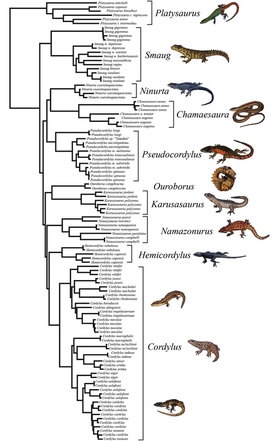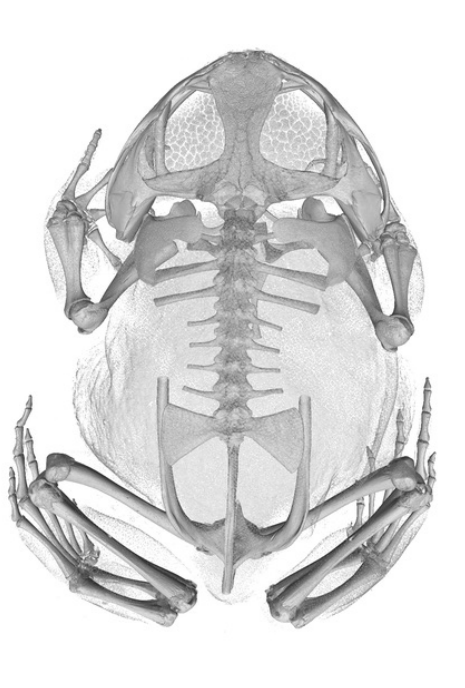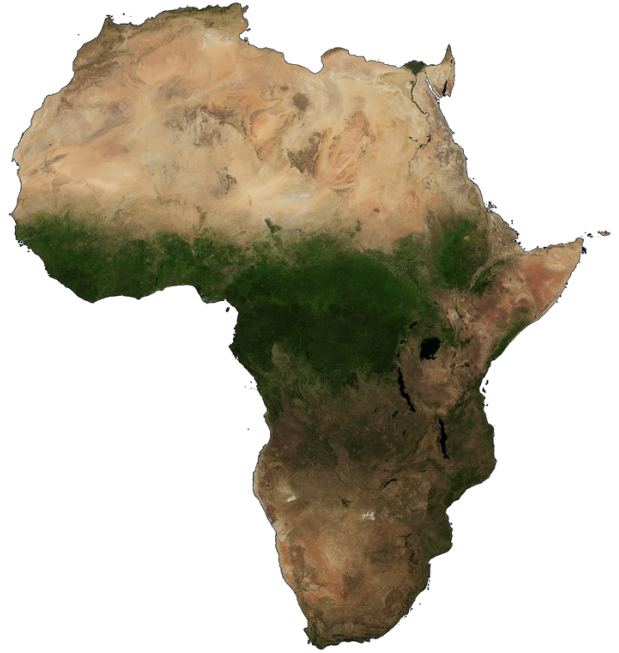My research interests cover a range of topics concerning the systematics and evolution of African squamates (snakes and lizards) and amphibians. I employ a combination of morphological, biogeographical and phylogenetic approaches to recover the evolutionary patterns and untangle the complex processes that drive diversification of these extraordinary groups. I am particularly interested in the evolutionary history and diversification of Africa's only endemic lizard family, the Cordylidae. Despite being a relatively small and geographically circumscribed group, cordylids display incredible ecological and morphological variation. One particularly exciting aspect of this work uses High-Resolution Computed-Tomography (CT) to quantify and analyze the incredible variation in the degree of armor displayed by the members of the family.
Phylogenetics
|
Phenotypic
|
African
|
|
Understanding how species are related to one another is a critical first step in studying evolutionary processes or understanding biogeographic patterns and distributions. In addition to using phylogenetic analyses to provide a working framework to test hypotheses about speciation processes, phenotype diversification, and historical biogeography, I am interested in the effect that taxonomic biases and practices have on macroevolutionary studies.
|
Studying how an organism is adapted to its environment can tell us a lot about its ecology and evolutionary history. I use Computed Tomography to quantify and analyze how certain morphologies are associated with habitat-types. For example, the close relationship between the degree of armor and micro-habitat preference in girdled lizards suggests that retreat-site availability played an important role in the early morphological diversification of the family.
|
The continent of Africa is incredibly biodiverse, containing a complex of ecosystems that are separated by biogeographic barriers of varying permeability. By investigating the current distributions of organisms in a phylogenetic and temporal context, we are able to piece together the biogeographic history of the continent and gain a better understanding of the processes and events that have shaped its current diversity.
|
Digital Museum Collections
Natural history collections are invaluable resources for a wide range of biological research. While museums can and do loan material out, access to many specimens is often limited to those that can visit the holdings, preventing some researchers, students and educators from utilizing these important objects. By creating digital facsimiles of specimens in our collection, we are better able to share our resources with a broader range of users. The Digital Discovery and Dissemination (3D) Laboratory is a shared resource in Dickinson Hall that serves the Museum, University of Florida and wider scientific community by facilitating the production, processing analysis and dissemination of three-dimensional digital data. The lab contains four high-end CT reconstruction desktops, 3D laser and light scanners, 3D printers and virtual reality equipment. Click below to look around and explore the lab.




